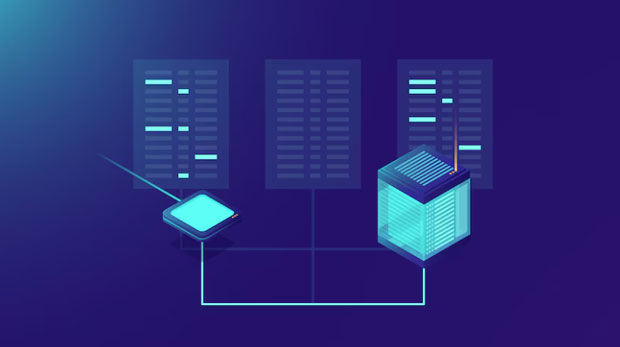The increasing reliance on proxies for various online activities has prompted questions about the reliability of proxy servers, especially sock s5 proxies. In particular, the IP source of a Linux socks5 proxy server is a point of concern for many users. The reliability of these IP addresses is a critical factor when it comes to online security, privacy, and performance. This article aims to provide an in-depth analysis of the reliability of the IP source used by Linux socks5 proxy servers. Through this exploration, we will examine key aspects such as anonymity, potential risks, and best practices for ensuring secure and reliable proxy connections. Understanding SOCKS5 Proxy ServersA SOCKS5 proxy server is a protocol used to route internet traffic through a remote server. This protocol, an upgrade over its predecessors, SOCKS4 and SOCKS3, allows for greater security and flexibility, supporting a variety of authentication methods and handling different types of traffic (including UDP). SOCKS5 proxies are commonly used to hide users’ IP addresses and encrypt their internet traffic to maintain anonymity.Unlike traditional HTTP or HTTPS proxies, SOCKS5 proxies work on a lower level, at the transport layer. This means they can handle a wider variety of internet activities, such as torrenting and gaming, without the limitations imposed by other proxy types.Factors Influencing the Reliability of IP Sources in SOCKS5 Proxy ServersThere are several factors that can impact the reliability of the IP source used by a Linux SOCKS5 proxy server. The following sections break down these key factors.1. The Origin of the Proxy ServerThe geographical location and ownership of the SOCKS5 proxy server significantly influence the IP reliability. Proxies that originate from data centers or trusted service providers typically offer a more stable and reliable connection compared to proxies from unknown or untrustworthy sources. While public proxies are easily accessible, they often come with a higher risk of malicious activity, such as data theft, interception, and misusage.A private SOCKS5 proxy, typically purchased from a reputable provider, is more likely to come with robust infrastructure, including security measures such as encryption, firewalls, and dedicated monitoring systems. These factors contribute to the reliability of the IP address, ensuring that the proxy service remains uninterrupted and provides secure access to the internet.2. Proxy Rotation and IP StabilityA common practice in the world of proxies is IP rotation, where the SOCKS5 proxy changes the IP address periodically. This is done to enhance anonymity, avoid IP blacklisting, and prevent users from being tracked. However, frequent IP rotation can also be a double-edged sword. While it increases privacy, it may also lead to unreliable connections, especially if the new IP addresses are from unreliable or poorly configured sources.Some SOCKS5 proxy providers offer static IPs, meaning the same IP address is used for a longer period. This is ideal for users who need stable connections, such as those conducting sensitive financial transactions or accessing restricted corporate networks. However, static IPs are more susceptible to being blacklisted or flagged by websites that use anti-fraud systems.3. Reputation and Trustworthiness of Proxy ProvidersThe reputation of the proxy provider plays a critical role in determining the reliability of the IP address associated with the SOCKS5 proxy server. Trusted providers are less likely to offer unreliable or risky IP addresses, as they have a vested interest in maintaining a good relationship with their clients. These providers often have strong anti-fraud policies in place and work with secure data centers to ensure the integrity of their IP addresses.On the other hand, using free or low-cost proxy services often carries significant risks. These services may have poorly maintained infrastructure, use shared IP addresses, or be operated by individuals with questionable motives. Users may face issues such as slow connections, frequent downtimes, and even security breaches when using these types of proxies.4. Legal and Compliance ConsiderationsThe legal standing of a SOCKS5 proxy server can also influence its reliability. Depending on the country in which the proxy provider operates, there may be varying levels of government surveillance and data retention laws. Some countries may require internet service providers to log traffic and store user data for extended periods, which could compromise the privacy of individuals using SOCKS5 proxies.Additionally, proxies from certain countries might be subject to greater scrutiny or may be blacklisted by major websites. This is especially important for users who rely on proxies to access geo-restricted content or to remain anonymous online.5. Performance Metrics of the SOCKS5 ProxyApart from the reliability of the IP address, the overall performance of the SOCKS5 proxy is crucial. A reliable proxy server must provide consistent speeds, low latency, and minimal downtime. Performance issues can arise from various factors, such as network congestion, server load, and the distance between the user and the server.Reputable SOCKS5 proxy providers typically offer performance monitoring tools, allowing users to track the health and reliability of their connections. If you are using a SOCKS5 proxy for critical tasks, such as business operations or confidential communication, it's vital to ensure that the provider offers high performance and reliability standards.Risks of Using Unreliable SOCKS5 proxy ip SourcesWhile SOCKS5 proxies can offer a high level of anonymity and security, using an unreliable IP source poses significant risks. These risks can include:1. Security VulnerabilitiesUnreliable IP sources may not have proper security measures in place, leaving users vulnerable to attacks, such as man-in-the-middle attacks, data theft, and malware injection. Without proper encryption or secure authentication protocols, sensitive data transmitted through these proxies can be easily intercepted.2. Blacklisting and BanningIP addresses from unreliable or free proxy servers are often flagged by websites and services. These addresses may be blacklisted, resulting in restricted access to websites, poor performance, and even account suspensions. This is particularly a concern for users engaging in activities such as web scraping or circumventing geo-restrictions, where IP addresses are more likely to be monitored and blocked.3. Performance DegradationPoor-quality proxy servers often suffer from slow speeds, high latency, and frequent downtime. This can severely affect your online experience, especially when using the proxy for time-sensitive tasks like gaming, streaming, or financial transactions. If the server is unreliable, users may find themselves constantly switching proxies or dealing with lagging performance.Best Practices for Ensuring a Reliable SOCKS5 Proxy ExperienceTo ensure that the IP source of a Linux SOCKS5 proxy server remains reliable, users should follow certain best practices:1. Choose Reputable ProvidersSelect a reputable SOCKS5 proxy provider that is known for offering reliable services. Look for providers with a strong track record, positive reviews, and transparent service terms.2. Consider Private ProxiesFor enhanced security and reliability, opt for private SOCKS5 proxies. These proxies are typically more stable and offer better performance compared to free public proxies, which often come with risks such as IP blacklisting.3. Monitor Proxy PerformanceRegularly monitor the performance of your SOCKS5 proxy server. Providers that offer performance tracking tools can help you ensure that your connection remains stable and secure.The reliability of the IP source used by a Linux SOCKS5 proxy server is influenced by a variety of factors, including the origin of the server, rotation practices, provider reputation, and legal considerations. While SOCKS5 proxies offer excellent security and anonymity benefits, users must be cautious about the IP sources they choose. By selecting reputable providers, using private proxies, and monitoring performance, users can ensure that their SOCKS5 proxy connections remain reliable and secure. Ultimately, the trustworthiness of a proxy’s IP address is key to maintaining privacy and achieving optimal performance when using SOCKS5 proxies for sensitive tasks.
Sep 16, 2025






















































